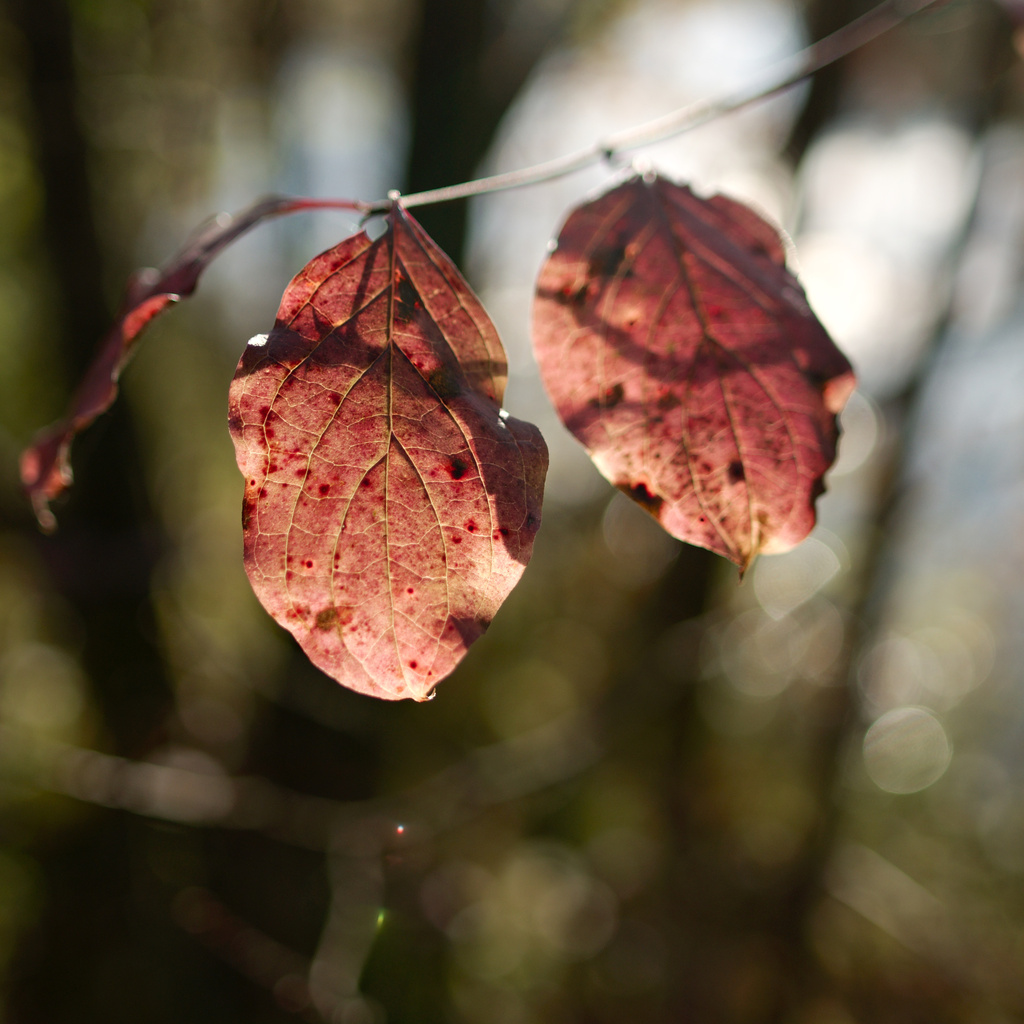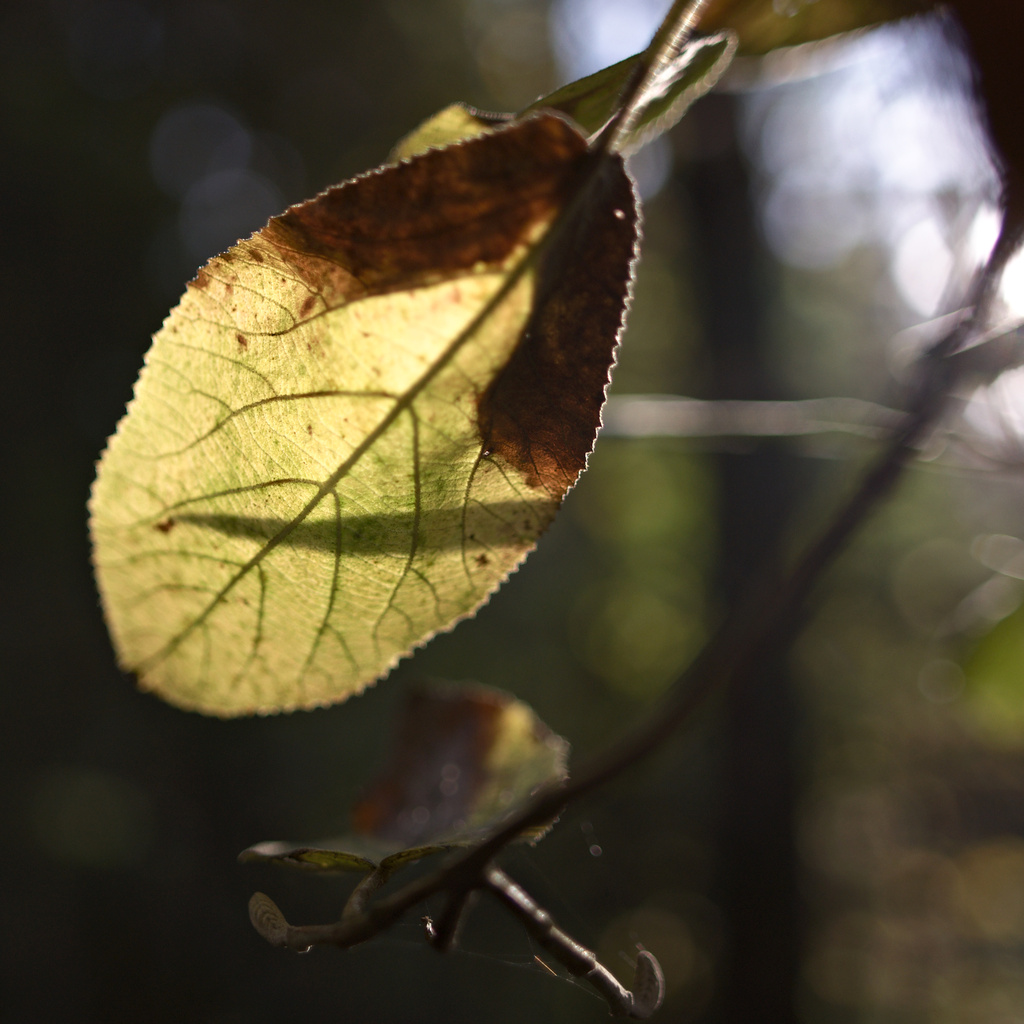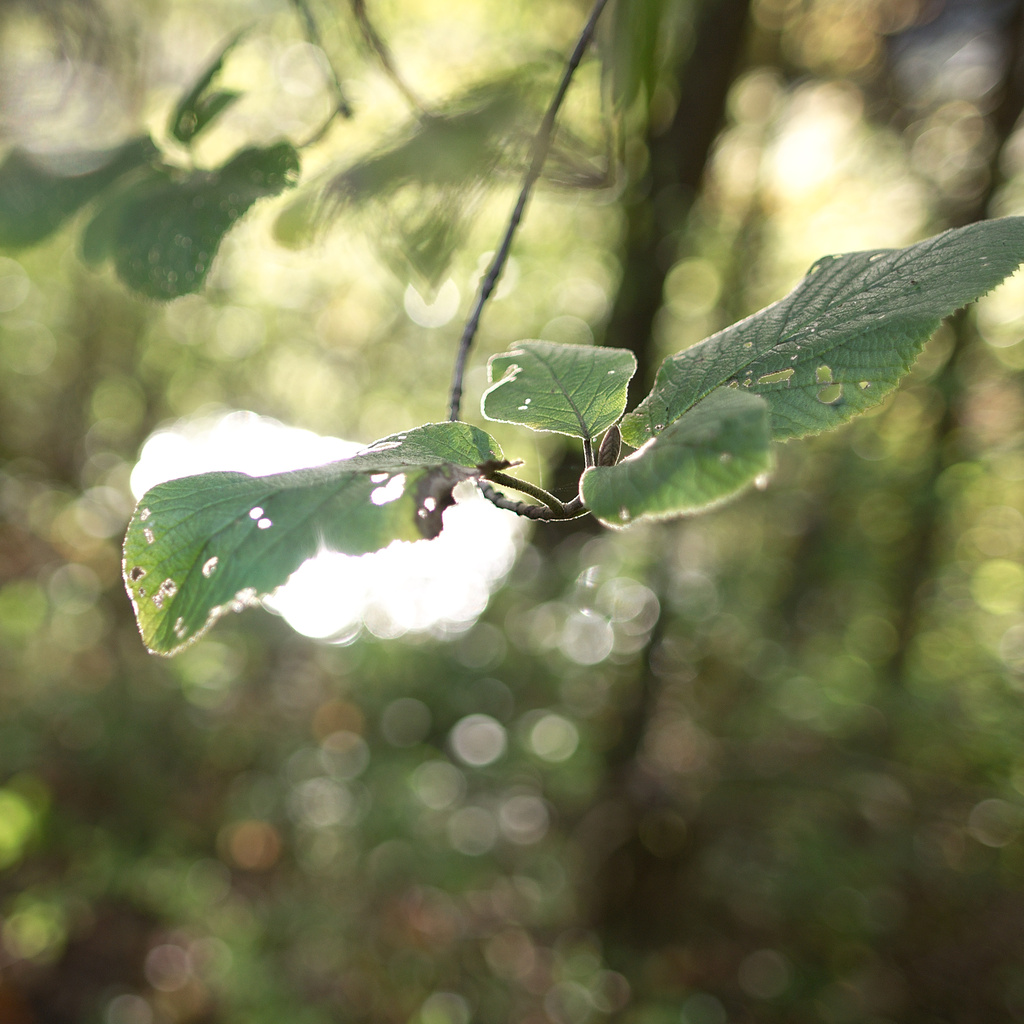


Up to now, bokeh for me was something soft, to be achieved with a longer focal length. But last week at the river Saalach backwaters, the afternoon sun came almost violently through the already sparse leaves. I did not want to romanticize this light, and so I switched to my 28mm (42mme) prime, a fast lens that I love for the normal angle of view it has on APS-C, and for its macro capacities: it focuses almost to the front lens. The unsharp regions regions show not those soft transitions that I am used from my 85mm lens, but I found it matching to the overall lighting situation. Of course focusing was not really simple, as wide open the DoF is to measured in single-digit millimeters, but several attempts at the same subject helped to get an acceptable result. Next time I might try continous exposure mode, something I had never needed up to now.